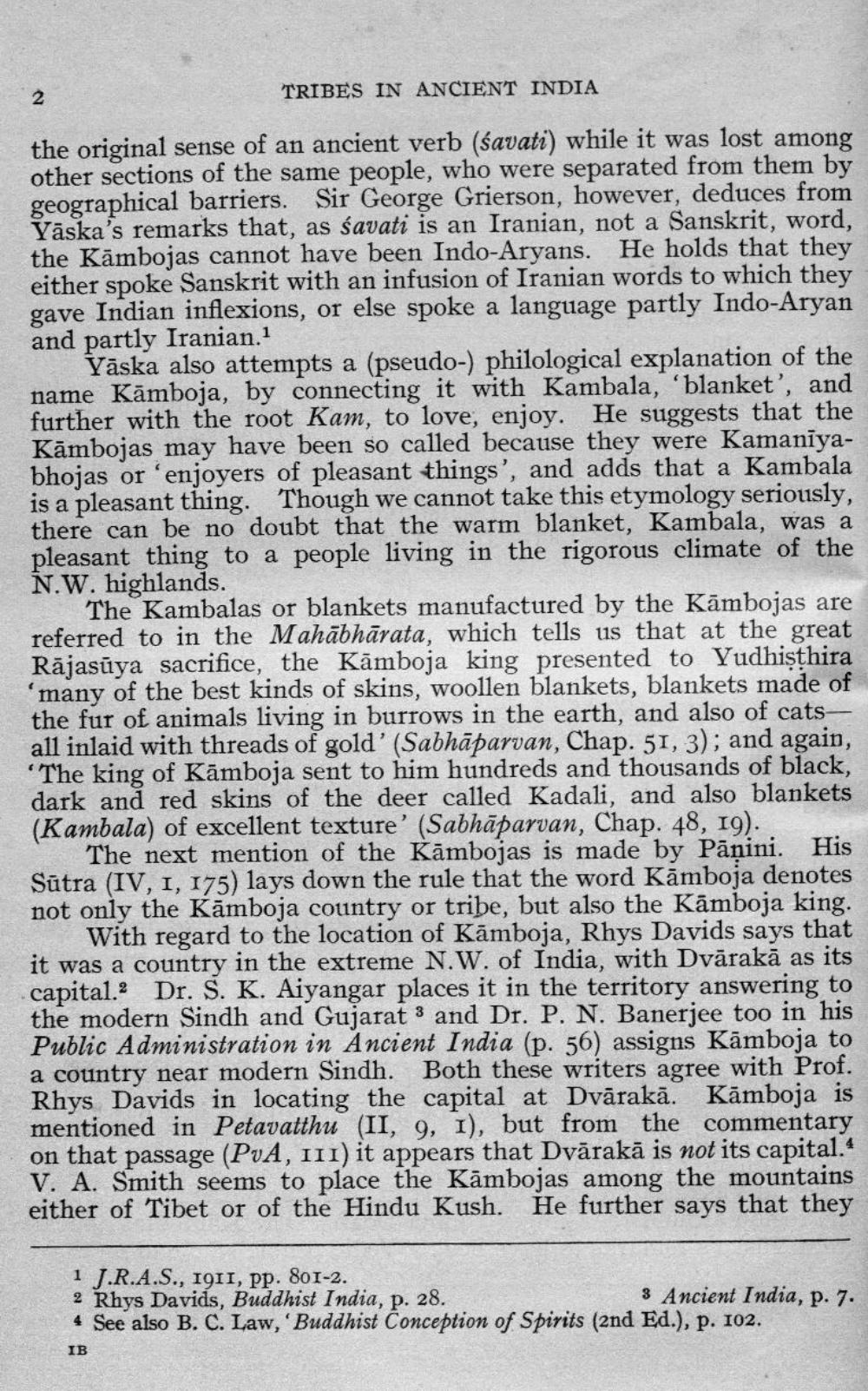________________
TRIBES IN ANCIENT INDIA
the original sense of an ancient verb (śavati) while it was lost among other sections of the same people, who were separated from them by geographical barriers. Sir George Grierson, however, deduces from Yaska's remarks that, as śavati is an Iranian, not a Sanskrit, word, the Kāmbojas cannot have been Indo-Aryans. He holds that they either spoke Sanskrit with an infusion of Iranian words to which they gave Indian inflexions, or else spoke a language partly Indo-Aryan and partly Iranian.1
Yāska also attempts a (pseudo-) philological explanation of the name Kāmboja, by connecting it with Kambala, 'blanket', and further with the root Kam, to love, enjoy. He suggests that the Kāmbojas may have been so called because they were Kamanīyabhojas or enjoyers of pleasant things', and adds that a Kambala is a pleasant thing. Though we cannot take this etymology seriously, there can be no doubt that the warm blanket, Kambala, was a pleasant thing to a people living in the rigorous climate of the N.W. highlands.
The Kambalas or blankets manufactured by the Kambojas are referred to in the Mahābhārata, which tells us that at the great Rājasūya sacrifice, the Kamboja king presented to Yudhisthira 'many of the best kinds of skins, woollen blankets, blankets made of the fur of animals living in burrows in the earth, and also of catsall inlaid with threads of gold' (Sabhāparvan, Chap. 51, 3); and again, 'The king of Kamboja sent to him hundreds and thousands of black. dark and red skins of the deer called Kadali, and also blankets (Kambala) of excellent texture' (Sabhāparvan, Chap. 48, 19).
The next mention of the Kāmbojas is made by Pāṇini. His Sūtra (IV, 1, 175) lays down the rule that the word Kamboja denotes not only the Kāmboja country or tribe, but also the Kāmboja king.
With regard to the location of Kāmboja, Rhys Davids says that it was a country in the extreme N.W. of India, with Dvārakā as its capital.2 Dr. S. K. Aiyangar places it in the territory answering to the modern Sindh and Gujarat 3 and Dr. P. N. Banerjee too in his Public Administration in Ancient India (p. 56) assigns Kāmboja to a country near modern Sindh. Both these writers agree with Prof. Rhys Davids in locating the capital at Dvārakā. Kāmboja is mentioned in Petavatthu (II, 9, I), but from the commentary on that passage (PvA, 111) it appears that Dvārakā is not its capital. V. A. Smith seems to place the Kambojas among the mountains either of Tibet or of the Hindu Kush. He further says that they
1 T.R.A.S., 1911, pp. 801-2. 2 Rhys Davids, Buddhist India, p. 28.
3 Ancient India, p. 7. 4 See also B. C. Law, ‘Buddhist Conception of Spirits (2nd Ed.), p. 102. IB




